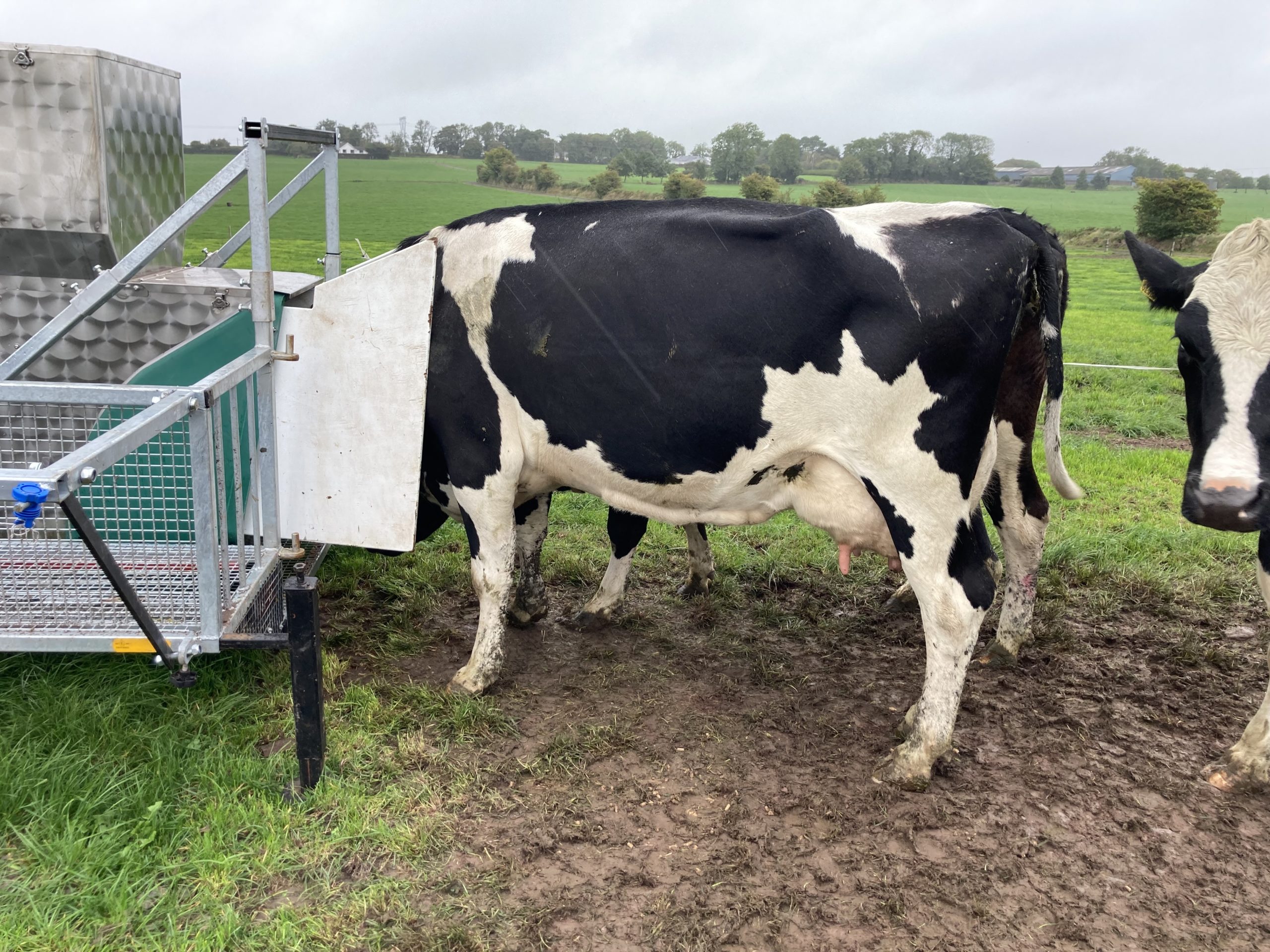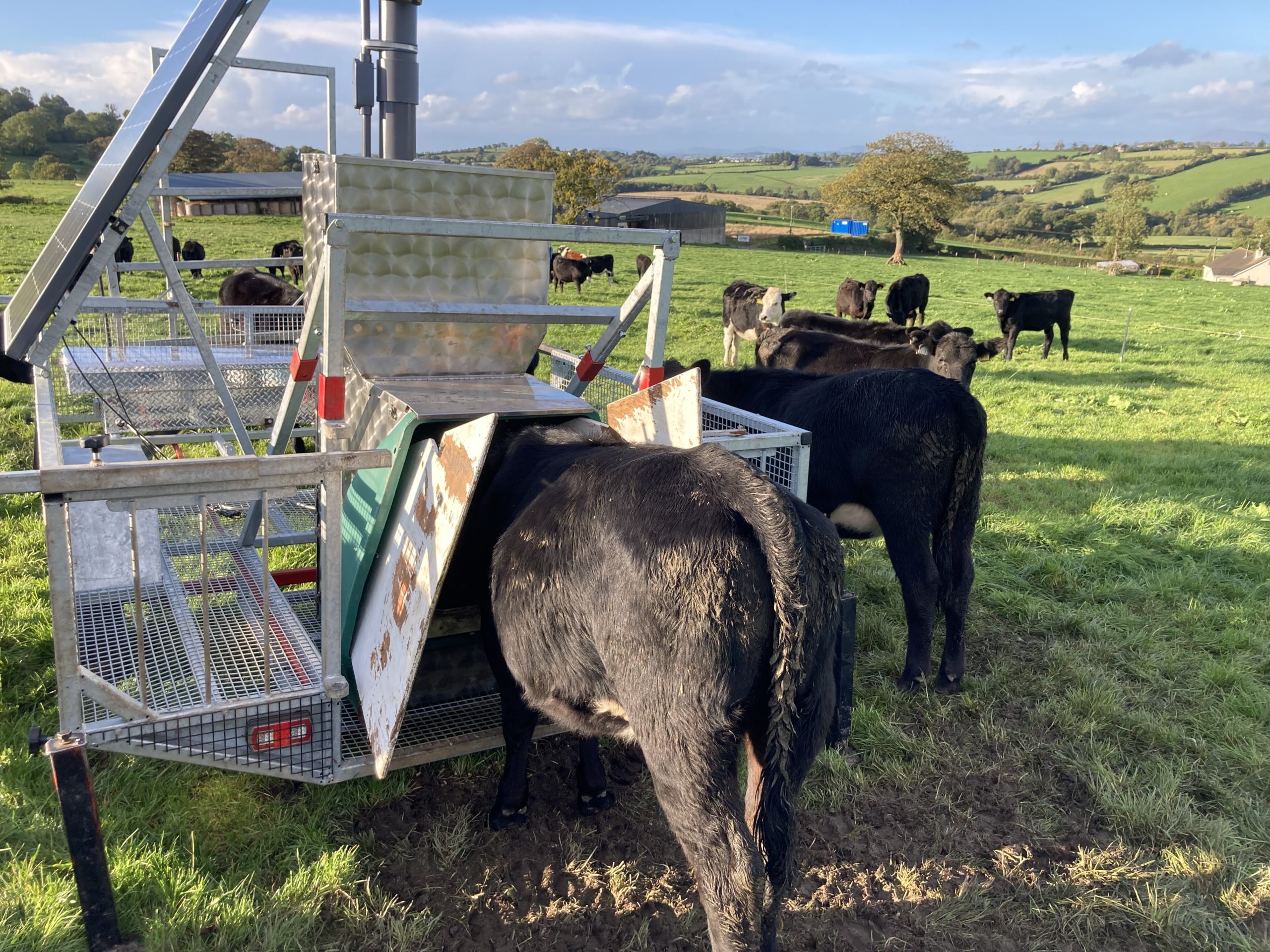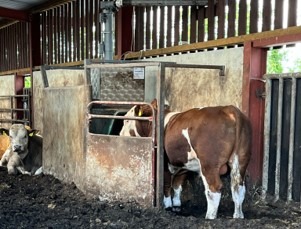Methane production from cattle digestion results in the loss of 6% to 10% of gross energy intake in cattle and globally is the single most significant source of anthropogenic methane (CH4) emissions. Reducing CH4 emissions, therefore, not only improves the environmental sustainability but also the efficiency of both dairy and beef cattle production systems.
Large scale recording programmes are required to facilitate genetic selection for reduced emissions. In Ireland, ICBF, through the Tully Progeny Performance Test Centre, have started the large-scale recording programme, using GreenFeed Emission monitoring systems. The progeny test centre slaughters 650 animals (steers, bulls and heifers) annually, 55% suckler bred, 45% from dairy dams. GreenFeed emission monitoring systems are a non-invasive recording system that measures enteric methane from animals while a bait feed is dispensed to encourage the animal to stay at the GreenFeed for two to three minutes to capture six eructation events.
GreenFeed is a system to monitor the metabolic gas composition of animals in a non-intrusive way. Its design and measurement capabilities have been initially tailored to the measurement of metabolic gases emitted from ruminants. The system is optimised to quantitatively capture cattle’s breath and analyse the emitted gases for trace constituents, including methane (CH4) and carbon dioxide (CO2).
The Greenfeed system uses a portable head-box either in an indoor system or in a grazing system on a trailer powered via solar panels and a battery system. The Greenfeed uses concentrated feed to entice animals to place their head in the head box. The GreenFeed starts sampling when the animal placed its head inside the hood. A radio frequency identification (RFID) reader identified the animal’s ear tag that was activated when the animal’s head (located by an infrared sensor) was in the correct location within the hood. Then 30 grams of concentrates will drop down into the feed dish every 30 seconds for a max period of 5 minutes.
When an animal places its head in the hood (figure 1), the volume of air that is drawn from around the animal’s head and shoulders is measured, and a subsample is analysed by nondispersive near infrared gas analysers for CO2 and CH4 concentrations. These results are then compared with background gas concentrations from before and after the animal entered the hood to determine gas emission rates. Spot estimates are then averaged throughout the sampling period to estimate each animal’s daily gas production.
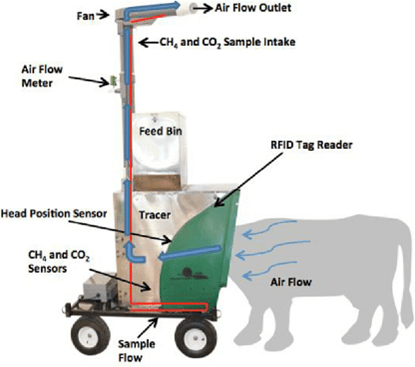
What are the benefits of using GreenFeed Machines?
The benefits of using GreenFeeds as a method of methane data collection are as follows:
- Collect methane data from animal from both indoor systems and grazing off pasture without effecting their normal feed behaviour like other methods.
- As we are collecting methane data for a young age within various production types (dairy farms, sucklers farms, calf to beef etc). We will then get a better understanding of the full LCA (life cycle assessment) of each farm systems for different cohorts of animals (dairy weanlings, in calf dairy heifer, dairy cows are various stages of the lactations and parity etc).
- Be able to quantify the effect genetics have in the reduction of methane though each generation of animals via the Gene Ireland programmes. Which can be used to calculated methane reduction in the national inventory.
GreenFeeds in Tully Progeny Test Centre
The Tully Test Centre allows us to record economically and environmentally important traits that are hard to capture on commercial farms. This is due to:
i) the expense of the equipment required.
ii) the level of labour essential to ensure that the data is being captured correctly.
Since 2018, methane records from over 1,300 animals have been collected in Tully, in conjunction with funding from RumenPredict, MASTER and GreenBreed projects. These animals have a wealth of phenotypic data available, including liveweights, ultrasound muscle measurements, feed intake, carcass weight, conformation, fat and the added benefit of being genotyped and sire verified.
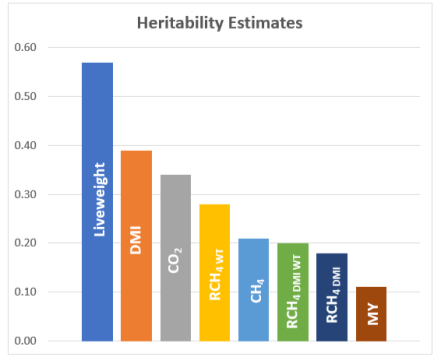
From the data recorded, enteric methane production has been shown to have moderate heritability, meaning selective breeding can offer a mitigation strategy to reduce methane from livestock.
Whilst trait definition around methane varies, heritability of these traits has been shown to range from 0.11 to 0.28. As methane has a moderate heritability, it means we can successfully breed for reduced methane emissions.
There are currently 9 GreenFeed machines located in the Tully Test Centre. The Greenfeed machines allow us to capture methane emissions from the Gene Ireland sired animals in Tully whilst simultaneously assessing them for feed intake and growth rate. These same animals will then also be assessed for meat eating quality. The holistic approach to the evaluation of the animal literally from farm to fork allows the Irish agricultural industry to position itself at the cutting edge of animal breeding internationally.
On analysis of the GreenFeed data, it was found that there is a large variation of the amount of time spent at the GreenFeed. Overall, the data captured equated to an average of 7 hours of visit time on per animal. This was typically made up of 2-5 minute visits across the day. The graph below highlights the large variation of time spent at the GreenFeed.
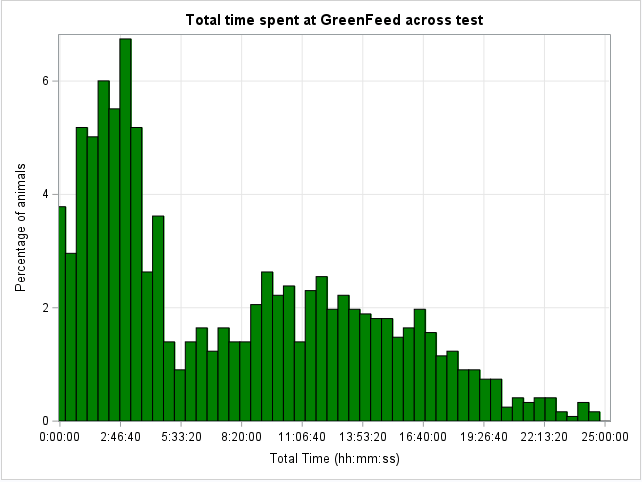
The next stage of research in this area will focus on grass-based methane measurement. Assessing the correlations in methane production at grass versus in finishing systems and animal behaviour towards utilising the GreenFeed machines will play a valuable role in evaluating enteric methane. Ultimately, a cross section of all different breeds, animal types (finishing animals, steers, bulls, heifers, lactating cows, etc.) and diet types are required to get a full lifecycle emission profile into genetic evaluations. In time, with the aid of methane GEBVs, we will be able to select animals producing less enteric methane.
This project is just one aspect of many methane mitigation strategies being developed to help Ireland meet its greenhouse gas reduction targets.